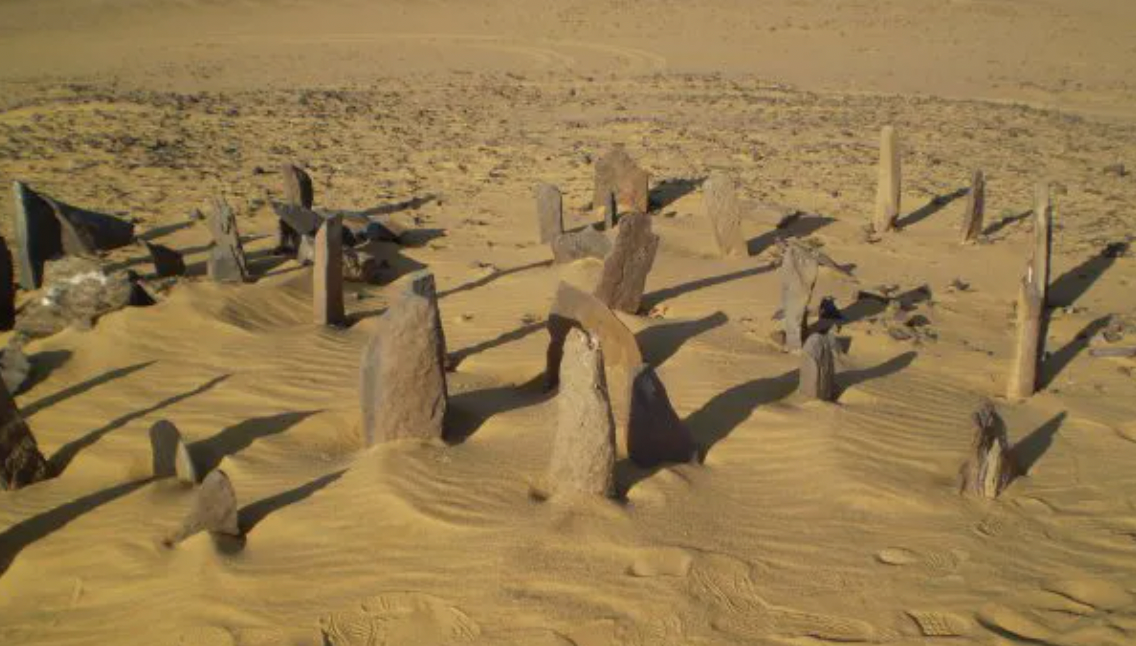
The Discovery: An Overview
Recently, an extraordinary archaeological find emerged from the vast expanse of the Sahara Desert, shedding light on the region’s rich historical heritage. This ancient artifact was uncovered by a team of researchers from various universities, who were engaged in a broader study aimed at understanding past civilizations that thrived in this arid landscape. The discovery occurred unexpectedly while the team was mapping previously identified archaeological sites that dated back to different eras.
The specific location of the find is near the ancient city of Timbuktu, a significant cultural center during the medieval period. Initial assessments indicate that the artifact holds immense value, potentially dating back over a millennium. The researchers believe it may provide critical insights into trade, culture, and daily life during a pivotal time in North African history.
The excavation team comprised historians, archaeologists, and geologists, all bringing their expertise to the forefront of this significant discovery. Equipped with advanced tools, including ground-penetrating radar and drone technology, they meticulously surveyed the area before making the find. The methodical approach they employed ensured minimal disruption to the surroundings while enhancing the chances of uncovering other significant items.
Despite the promising nature of the excavation, the researchers faced numerous challenges inherent to conducting work in the Sahara Desert. Extreme temperatures and shifting sands presented persistent obstacles, complicating both the digging process and the preservation of the artifact during extraction. Moreover, logistical concerns, such as access to remote locations and ensuring team safety in the harsh environment, required ongoing adaptations to their operational plan.
This remarkable discovery not only exemplifies the untapped archaeological potential of the Sahara but also highlights the tenacity and dedication of the research team. Their work promises to contribute substantially to the understanding of ancient civilizations in North Africa.
The Ancient Artifact: Description and Significance
The recent discovery of an ancient artifact in the Sahara Desert has drawn considerable attention from archaeologists and historians alike. This artifact, resembling a finely crafted ceremonial object, measures approximately 30 centimeters in length and 10 centimeters in width. Constructed from a blend of materials, including clay and ornamental stones, it exhibits intricate designs that suggest a high level of craftsmanship. The surface displays a series of carvings, which experts believe may represent symbolic motifs significant to the civilization that produced it.
Notably, the artifact features inscriptions that are yet to be fully deciphered. These markings might provide crucial insights into the language, customs, and belief systems of the society responsible for its creation. The style of writing seen on the artifact suggests it may belong to a period where such art forms flourished, potentially linking it to other well-documented historical events or trends within the region. As researchers examine the artifact, they are hopeful that it will illuminate connections to trade routes and cultural exchanges that were prominent in ancient North Africa.
The significance of this artifact extends beyond its physical characteristics; it also serves as a vital piece of evidence in understanding the broader historical context of ancient civilizations in the Sahara. Experts propose that such artifacts played essential roles in rituals or governance, functioning as mediums through which societal values were expressed. Comparative analysis with similar findings in the vicinity further enhances the understanding of its historical role. As more data emerges, archaeologists aim to establish a timeline that situates this artifact within the continuum of the Sahara’s rich tapestry of human history.
Impact on Archaeological Studies
The recent discovery of an ancient artifact in the Sahara Desert has far-reaching implications for the field of archaeology. This finding not only adds a new dimension to our understanding of human history in this vast region but also challenges previously established narratives. Historically, the Sahara was viewed as a barren expanse that limited human activity to sporadic settlements. However, this artifact suggests that there may have been more complex societies or interactions among groups than previously thought, thereby reshaping our comprehension of cultural development in this area.
The broader implications of such a discovery necessitate a reassessment of existing theories surrounding ancient civilizations and their migratory patterns. Scholars are now compelled to consider the Sahara as a dynamic environment that could have sustained larger populations and intricate social structures. This paradigm shift encourages further exploration of archaeological sites across the region, integrating more extensive research methodologies to unearth additional artifacts that may corroborate or refute existing concepts.
This remarkable find has also ignited a wave of collaborative efforts among archaeologists, historians, and scientists, who recognize the value of interdisciplinary approaches in shedding light on ancient human activity. Through joint research endeavors, these professionals aim to piece together the artifact’s historical context, analyze its material composition, and explore its cultural significance. Funding from various institutions has become a reality as the discovery garners increasing attention, enabling comprehensive excavation and analysis projects.
Future studies are poised to employ advanced technology, such as ground-penetrating radar and 3D imaging, to further investigate the site’s potential and unlock additional historical contexts. As the implications of this discovery unfold, it becomes clear that the artifact serves not only as a significant piece of history but also as a catalyst for ongoing inquiry and interdisciplinary collaboration in the field of archaeology.
Connecting the Past to the Present: A Community Perspective
The recent discovery of an ancient artifact in the Sahara Desert has not only broad implications for the archaeological community but also holds significant meaning for the local populations residing in the region. As historians and archaeologists celebrate this momentous finding, it is essential to acknowledge how this resonates with the native communities and their cultural identities. Local leaders have expressed their enthusiasm, recognizing the artifact as a bridge connecting past civilizations to contemporary life. “This discovery is a testament to our rich heritage and reminds us of our ancestors’ contributions,” shared a prominent tribal chief.
The artifact’s discovery offers a unique opportunity for education and instills a sense of cultural pride among residents. Community members are increasingly aware of the archaeological process and how it highlights their history and collective identity. Local historians emphasize that such findings validate their ancestral narratives, providing tangible links to historical events and practices that have shaped their lives. One historian noted, “These relics serve as reminders not only of who we were but also of who we are today.” Such sentiments evoke a shared sense of responsibility to protect and preserve these historical treasures for future generations.
Furthermore, the artifact has potential implications for tourism, which could lead to economic benefits for local communities. Enhanced interest in the Sahara’s history may attract visitors seeking to engage with the region’s rich heritage. “Our artifacts tell stories that deserve to be heard and shared,” remarked a community member involved in local tourism initiatives. By fostering connections between tourists and local residents, this discovery could create mutual respect and appreciation for both the past and present, ultimately illuminating the enduring significance of the Sahara Desert’s cultural landscape.




